Artist Joan Konkel presents a fascinating portfolio of ethereal woven mesh sculptural artworks that interact with light. Visit her website to see more.
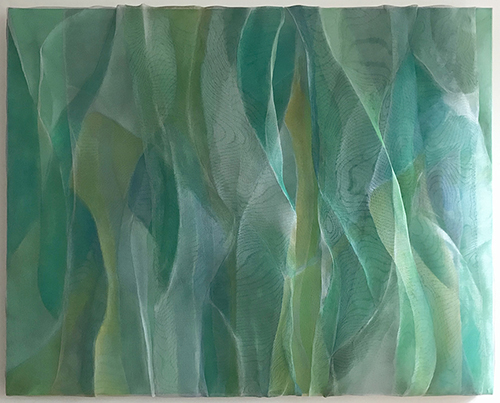
“Gaia’s Secret” finely woven mesh and acrylic on canvas, 48″ x 60″ x 6.5″
I grew up in California, the land of sun, sparkling seas and snowy mountains. Perhaps this is why light and color have been important in my work.
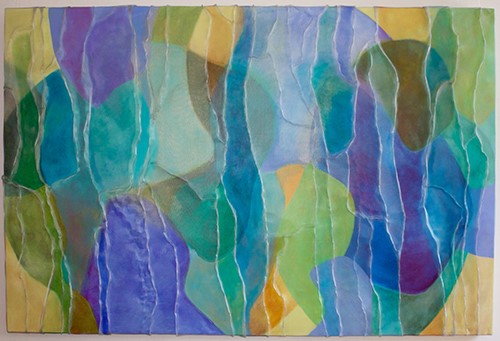
“Passages & Promises” finely woven mesh and acrylic on canvas, 48″ x 60″ x 4″
As an adult, I moved to Washington, DC, where I obtained a master’s degree in sculpture and worked with form, and space. These experiences have influenced my work as I attempt to capture light and to play with creating new colors in space from a blend of different hues on multiple surfaces.
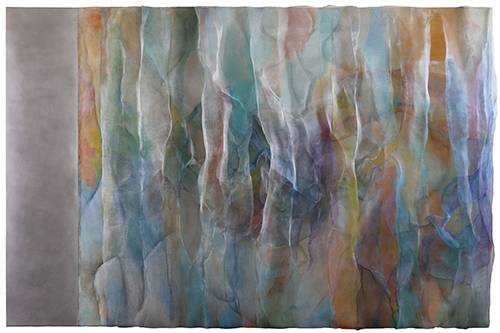
“Eroica” aluminum, finely woven mesh and acrylic on canvas, 48″ x 72″ x 8″
I begin a piece by painting a canvas, which is my base layer. I then paint, and sometimes shape, layers of fiberglass or metal mesh. The painted mesh is placed atop the canvas.
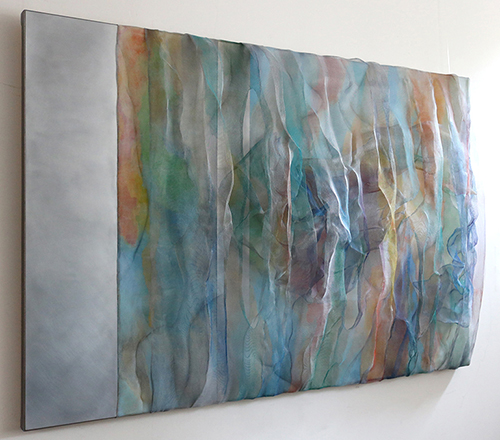
“Eroica” (alternate view) finely woven mesh and acrylic on canvas, 48″ x 72″ x 8″
I have found that each type of mesh has special properties. Metal mesh has the advantage of holding a shape. When I increase the distance between layers, the illusion of greater depth might be observed. I can shape metal mesh to hold soft bends or sharp angles. When metal mesh is cut, I have to conceal the edges which are sharp and could cause injury.
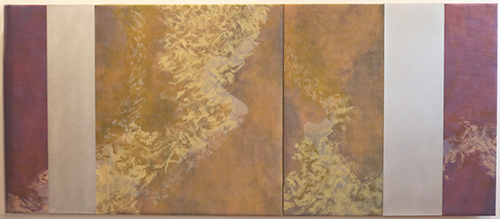
“Aeolian Music” (diptych) finely woven mesh, acrylic and aluminum on canvas, 36″ x 48″ x 2″ and 36″ x 36″ x 2″
Fiberglass mesh, by contrast, behaves more like fabric. Unlike metal mesh, it fails to hold a specific form and instead can be draped. Shapes cut out of fiberglass mesh can be layered or overlapped without worry of sharp edges.
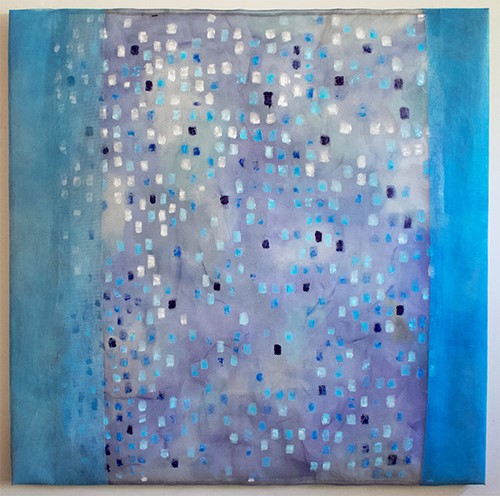
“Shadow Dance” finely woven mesh and acrylic on canvas, 48″ x 49″ x 4″
The mesh I use is porous. Thousands of tiny openings allow passage of both light and color. By using mesh as a medium, I insure that space is incorporated into the work.
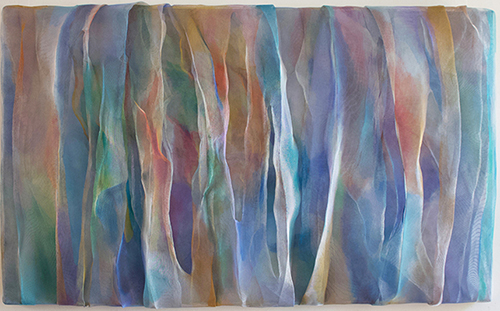
“Fracture” finely woven mesh and acrylic on canvas, 37″ x 61″ x 7″
As light filters through these openings, light waves refract and reflect off each strand. As light waves collide, either constructive or deconstructive interference occurs, in essence, creating either an increase of, or a diminishing of, light. In some cases, particularly with fiberglass mesh, sections of the work become iridescent.
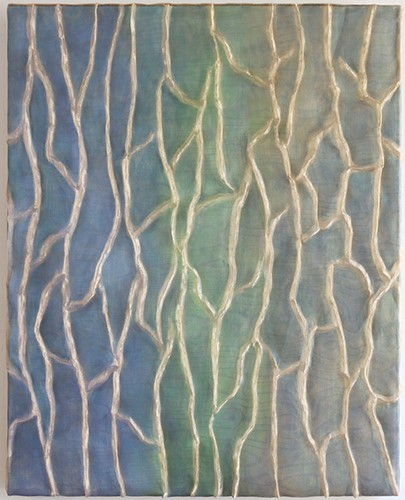
“Au Clair de la Lune” finely woven mesh and acrylic on canvas, 60.5″ x 49″ x 3″
Light travels among the layers of my work and color also journeys. The colors I have painted on the separate layers of mesh and canvas blend optically at the surface. This makes me feel that I have given colors independence. They can travel from a two-dimensional plane, enter the third dimension, and blend with another color to form a new hue.
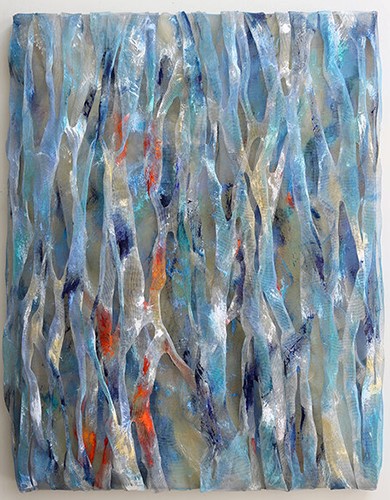
“Tangerine Forest” finely woven mesh and acrylic on canvas, 31″ x 41″ x 6″
Shaped metal mesh also permits hues to unite with different colors based on the angle from which a piece is viewed. The layering of mesh can also break apart a blend of colors. Because of the grid structure of mesh, when layered, the blend of colors can fracture into moiré patterns comprised of two distinct colors. I have learned to manipulate these patterns as design elements.

“Mystique” finely woven mesh and acrylic on canvas, 48″ x 60″ x 4″
My work, the journey of light, space and color as it meanders through the medium of mesh, has followed many paths of exploration. Each path has brought new insights into this marvelous medium.
Joan Konkel invites you to follow her on Instagram.


Speak Your Mind